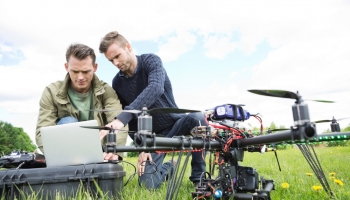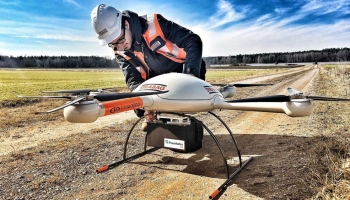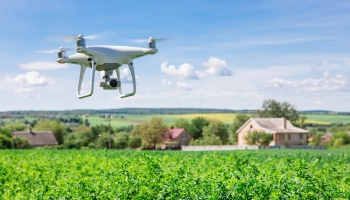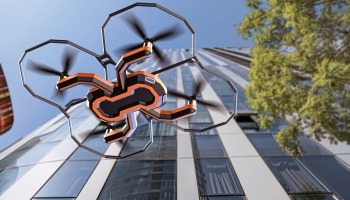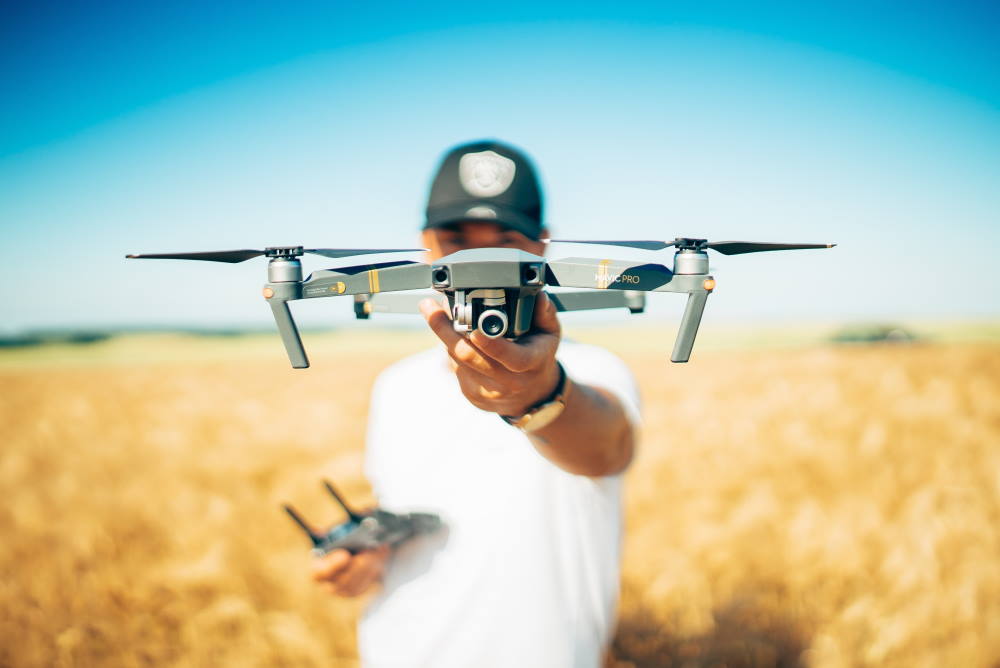
Devices that were once reserved for the annals of science fiction have now become commonplace, and are available for purchase from most local retailers.
Cell phones, smart watches, and more were all once seen as the peak of scientific advancement, but are now considered extremely commonplace and not at all extraordinary.
Although cell phones have experienced plenty of widespread use for the past twenty years, there is one form of technology that has only recently enjoyed a shift to consumer use: the drone.
Before we dive too deeply into how drones work and what they are for, let’s take a brief look at the history of the drone and how it cam to be.
Drones: A Brief history
Although drones themselves are not new, the technology itself is relatively recent, in the grand scheme of general technology, and personal technology use.
Drones were initially developed as a type of military technology that was highly sought after for its ability to deliver missiles and other weapons to a target, without the risk of shooting down a soldier or group of soldiers.
Drones were created to minimize the number of deaths ascribed to war and war time situations, and allowed governments to conduct air strikes remotely.
Although drones for the United States government would have added up to fewer than twenty total, as the technology responsible for drones has improved and continued to develop, drones have become far less expensive, and most governments have literally hundreds to thousands of drones at their disposal.
The earliest possible iteration of drones was conjured in the mid 1800s, when hot air balloons were used to deploy explosives over Venice.
Although this attempt failed, it does describe the first known attempt to create a drone-like technology to use in an act of war, without risking the lives of the offending party’s military personnel.
In the late 1910s, drone technology saw a surge in growth, when the United States government created the “Kettering Bug,” or a drone-like device that was intended to be used to deploy explosives.
In the 1930s, drone technology truly began to take off, and the drones we know today were officially born, and utilized radio frequencies to control the drone in question.
Finally, the 1970s demonstrated the ability of drones to be used not only as delivery units for explosive devices, but also as sources for reconnaissance.
Cameras began to be attached to drones during this period, and governments began to use drones in a much larger capacity.
Although drones were initially developed as a form of military technology, like most types of military technology, increased development and decreases in costs allowed that same technology to move away from strict military use and deviate toward personal use.
Drones began to be used in home and commercial settings starting in 2006.
The still large expense of drones meant that drones were primarily focused on commercial use, and did not enjoy a smooth transition to home or personal use until 2010 and on.
It was also during this time that drones began to experience use as delivery machines, photography aids, and more.
What Are Drones?
In the simplest possible explanation, a drone is an unmanned aircraft.
Given the colorful and varied history of drone technology, however, a more intensive definition is necessary to truly evaluate and describe the nature of a drone.
After all, an unmanned aircraft could be used to describe a hot air balloon without a pilot, and could even be used to describe a kite.
Instead, a more thorough and accurate description of a drone would likely include, “An unmanned aircraft that is controlled remotely or through the use of inborn technology.”
This definition is a more fitting description of modern drones, and is more accurate in describing the type of drone that is sought after in both personal and commercial capacities.
Drones are variable in size and design.
Many drones employ a “four-square” type design, with four spinning propellers used to compel the drone skyward, while others more closely resemble small airplanes or other aircraft.
The type and design of the drone in question will likely depend on the purpose of the drone.
Commercial drones, for instance, might be larger and capable of mounting a large camera, or carrying packages, while personal-use drones are usually smaller and designed to carry a much lighter load, if they are designed to carry any load at all.
Drones and Practicality: What Drones Are Used For
The uses for drones number in the dozens, with everyone from federal governments to children in their backyard capable of using and enjoying drone technology.
Some of the more common uses for drones include military use, photography, philanthropic organizations collecting footage, and even business use.
Drones can be used to gather intelligence from other countries or areas, without being readily detected, making them ideal for military operations and even simple businesses, and they can be used to take photos and videos from a great height and a wide lens, allowing photographers, conservationists, and others to secure truly breathtaking photos at a fraction of the cost of attempting to secure a helicopter or other aircraft to attempt to get those photos, themselves.
It also makes aerial photography more accessible for more people, as it makes a way for more people to successfully view and explore the earth and sky.
The most common uses for drones will be identified in greater detail below.
Military Drones
Despite their history as devices designed to deliver doom, military drones are far more often used as ways to collect information and surveil areas of concern.
These drones allow the government to keep a metaphorical eye on certain areas and situations, and do so without risking the lives of military personnel.
Drones may still be used to deliver airstrikes, but they are far more often used as an effective means to gather information and stay abreast of any new developments in areas of concern.
Commercial Drones: Delivery Systems
Some commercial companies and industries utilize drones as effective delivery systems.
These drones are not used to cross large distances, but are instead used to target deliveries needed over small distances.
The medical industry is the one industry that has used drones on a larger scale, and is more often used in countries that need to deliver large amounts of medical supplies or medicine to a remote area.
This particular use for drones is continually improving, however, as the industry continues to refine and modify drone delivery methods.
Some have posited that drone delivery systems are the delivery systems of the future, but this particular use for drones has been slower to catch on than was initially expected.
Commercial Drones: Information Gathering/Imaging
Perhaps the most common and significant use of drones in industry is those used to data gather, in whatever form that may take.
For nonprofits, drones may be used to gather information about a local forested area in danger of disappearing, or may be used to track the patterns seen in nearby rivers and lakes.
In larger industries, drones may be used to take the place of a person in a chemical plant or other dangerous situation, to limit exposure as much as possible. Information gathering may also include taking photos or videos from great heights.
Drones are often used in film and television, to create specific images or gather footage to convey distance or space.
They may also be used in publishing houses and other industries to create charts, maps, and images.
Commercial drones can also be used on a smaller scale.
Some farmers utilize drones to track patterns on their farms and evaluate yields, while others might use drones to conduct routine inspections of their buildings and surroundings.
Drones can be extremely useful for businesses large and small, and can help reduce the number of physical workers a company must hire to complete necessary tasks, which can help small companies stay afloat.
Personal Use Drones
Drones intended for personal use can fulfill a virtually limitless number of functions.
Some drone enthusiasts enjoy using drones to simply fly around and take to local parks, much in the same way people might enjoy using model trains or even remote-control airplanes.
For these people, drone use is simply a hobby, and it does not serve any further purpose.
For others, drone use is tied to creating images or filming, whether that be a personal photography habit, or even a standing appointment as the family videographer during large family events.
Home-use drones run the gamut, and can include virtually any drone that is currently available for purchase, provided that the individual in question has the requisite budget.
How Do Drones Operate?
There are two ways that drones operate: via remote control, and via pre-programmed flight patterns and behaviors.
The most common way to use drones is to use remote controllers, as most drones that follow a preprogrammed flight pattern are used in specific commercial applications, or in military operations.
Because remote controlled drones are the most common drones seen and used today, we will focus on these for this article.
Remote controllers for drones are quite diverse.
Some resemble the controllers that used to come along with remote-controlled cars and airplanes, and offer simple controls, such as direction and starting to ending points.
Others allow you to connect your phone to the controller, and manipulate the patterns of the drones through your phone.
Still others offer a more complex series of controls, including controlling the camera attached to the drone.
The exact type of controller being used will vary from drone type to drone type and from use to use.
A Peek Inside: What Drones Are Made Of
Drones are designed to fly easily and maneuver well, which requires a lightweight and aerodynamic design.
For this reason, most drones are made with a plastic or composite material that lends itself to lightness and speed.
The durability of this material will, of course, depend on the model and the company that produces it; some drones are designed for extreme durability, as is the case for military drones, while others are created with budgetary needs in mind, and are primarily made for those who use drones as a hobby.
Drones are typically made up of two to three components: the drone itself, the charging mechanism, and the controller or remote.
The design of these components may vary considerably—some drones, for instance, combine the charging unit and controller—but the basic mechanics are usually the same.
This can make moving between models and makes an easy task, and can help hobbyists develop some confidence in operating drones.
Drone Types
There are four basic types of drones currently available for use: multi-rotor, single-rotor, fixed wing, and fixed wing hybrid.
The drone style that is perhaps most popular for its role in delivering airstrikes is the fixed wing drone, which strongly resembles a small plane without a cockpit or space for passengers.
Although each type of drone can fulfill a number of different purposes, there are specific areas each type of drone is particularly well-suited for.
Multi-rotor drones, for instances, are usually employed by hobbyists, though they can also be used to suspend cameras in the air for short periods of time and over short distances.
Helicopter-like single-rotor drones are typically used for more substantial projects.
Although they may be used by hobbyists, they can actually quite hazardous and expensive or complicated to maintain, which makes them an uncommon choice for personal use, but a common choice for commercial and military use.
Fixed-wing drones can be used for commercial purposes and personal purposes, but are most commonly used in military exercises and as military devices.
They provide the same stability, strength, and force of airplanes, which make them ideal for longer distances, heavier loads, and more precision—all of which are valued by and necessary for military operations.
Fixed-wing hybrids are the newest type of drone currently available for use, which makes them uncommon for hobbyists and personal use.
Much of the technology for fixed-wing hybrids is still being sorted through, but current models suggest they combine the compact, lightweight nature of multiple-rotor with the stability and strength of fixed-wing drones.
A Word of Caution
Drone use is not approved in all areas.
Some parks and private land airspace, for instance, might forbid drone use.
In some cases, pleading ignorance is enough to avoid trouble. In others, however, users can be fined for ignoring or failing to recognize drone prohibitions or airspace instructions.
Before taking your drone out, check with local ordinances and policies to make sure your weekend activity will not end up costing you a great deal of money and even time spend with lawyers or in court.



